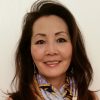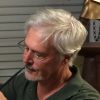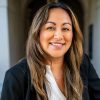Innovative Technologies and Emerging Techniques: 3D Documentation and Reproduction
Preservation Technology Part III
Join us for Part III of our Preservation Technology series to explore how advanced 3D scanning and reproduction technologies are revolutionizing restoration projects. This session will feature detailed case studies, methodologies, technical insights, and a Q&A segment.
Handheld 3D Scanning & 3D Printing
Discover how handheld 3D scanning and 3D printing are transforming restoration practices. We will present two case studies demonstrating these technologies in action for both exterior and interior applications.
Case Study – The Hotel Martinique, New York City
Yifeng (Yvonne) Zhang from CANY and Michael Blackburn from Darwen Terracotta will discuss the Hotel Martinique facade restoration. Learn how 3D scanning was used to document existing terracotta elements, streamline project timelines, reduce costs, and minimize environmental impact. The session will also cover the reproduction process of terracotta sculpture blocks using 3D printing, scanning, and CNC milling.
Case Study – First National Bank, Napa
Lisa Federici and David Bassett from Scansite will present their restoration work on the First National Bank’s interior crown moulding, damaged by the 2014 South Napa Earthquake. Gain insights into the challenges and techniques used to reverse engineer existing conditions and create replacement parts with a large-scale 3D printer.
LiDAR and Photogrammetry – Emerging Techniques
Following these two case studies, Shari Kamimori from 3D Virtual Design Technology will explore the practical applications of LiDAR and Photogrammetry in preservation. Discover how these emerging techniques enhance our ability to inspect, analyze, document historical buildings, and reproduce objects for restoration. Don’t miss this opportunity to delve into the intersection of technology and preservation with insights from industry experts. Join us for an in-depth look at the practical applications of 3D technologies in documenting and restoring our cultural heritage.
LEARNING OBJECTIVES
- Participants will gain insight into how 3D scanning technology is utilized in landmark restoration projects, including its role in documenting and analyzing building elements, as demonstrated through the Hotel Martinique case study.
- Participants will learn about the integration of LiDAR and photogrammetry in modern preservation workflows, and how these technologies enhance inspection, documentation, and reproduction processes, with a focus on practical applications and benefits.
- Participants will examine the methodologies used in restoring historical sites, such as the combination of 3D printing, scanning, and CNC milling in the terracotta sculpture restoration at the Hotel Martinique, and how these methods contribute to project efficiency and cost-effectiveness.
- Participants will evaluate the techniques and challenges involved in restoring damaged historical interiors, as illustrated by the First National Bank case study, and understand the use of large-scale 3D printing for producing replacement parts.
SPEAKERS
 Yifeng (Yvonne) Zhang
Yifeng (Yvonne) Zhang
As a Director of Professional Services for CANY Architecture & Engineering, Yvonne Zhang, RA, LEED BD+C, is experienced in architectural heritage documentation. Yvonne has a MS Degree in Historic Preservation and is specialized in New York City’s historic facades and building enclosures, with an enduring respect for industrial heritage architecture. At CANY she thrives on their positivity and professionalism and is motivated by the integrity of historic preservation, diversity of material science and art of restoration.
 Michael Blackburn
Michael Blackburn
Michael began his career in construction estimating while pursuing a part-time diploma and later a full-time Building Studies diploma with the aim of becoming an architect. After achieving this goal, he joined Shaws of Darwen’s survey and design team — at the time one of only two UK companies manufacturing architectural terra cotta — where his passion for architectural terra cotta grew as he worked on projects for Harrods and the Natural History Museum. After managing contracts in the US and Canada, he started his own surveying business and later joined Darwen Terracotta Limited as a founding team member, continuously focusing on leveraging technology in his roles.
 Shari Kamimori
Shari Kamimori
Shari is a Design Professional with over 35 years of experience in the architectural design field. She is President and founder of 3D Virtual Design Technology (3DVDT), a digital survey firm based in the San Francisco Bay Area, using innovative 3D technology to capture existing structures and create highly accurate as-built documentation for the historic preservation, architectural, engineering and construction industries. She holds a degree in Interior Architecture and is actively dedicated to the advancement of design technology and historic preservation, serving as a Board Director for Napa County Landmarks, member of the Technical Documentation Committee for APT, and Technology in Architectural Practice Committee for AIASF. She has published an article in LiDAR News titled "3D Laser Scanning Technology — Key in Preserving Historic Structures After South Napa Earthquake".
 Lisa Federici
Lisa Federici
Lisa is the forward-thinking founder and CEO that launched Scansite3D, one of the world’s first 3D digitizing companies in 1994. Today, Scansite has grown into an award-winning 3D technology company whose high profile, groundbreaking projects are often covered in publications such as National Geographic, NASA Tech News, Mechanical Engineering, The Washington Post, Computer Graphics World, and more. Scansite3D provides full-service solutions that continually push the 3D technology boundaries. This dedication to the industry has allowed Scansite to forge many long term and successful working relationships with companies such as The Metropolitan Museum of Art, the Smithsonian Institution, NASA, Major League Baseball, and more. Lisa graduated from Ohio University with a Degree in Business and obtained a Master’s in Art History at the University of Florence, Italy.
 David Bassett
David Bassett
David graduated with a Bachelor of Architecture degree from Ohio University and studied classical Greek language at the University of Cincinnati. He is a California licensed architect and lives and works in the San Francisco Bay area. In 1995 he began working with museums, including the Metropolitan Museum of Art, the Sackler Museum at Harvard University, the Smithsonian Institution, and the Bibliotheca Apostolica Vaticana, assisting in the creation of three dimensional replicas of objects in their collections. His work at the Metropolitan Museum of Art has included sculptural works by Gian Lorenzo and Pietro Bernini, Michelangelo Buonarroti, Edgar Degas, Benedetto da Maiano, Pietro Torrigiano, and anonymous works including The Cloisters Cross, sculpture from Chartres Cathedral and the Statue of Saint James from the tomb of Ferdinand and Isabella in Spain. In recent years he has focused increasingly on pursuing his passion for classical painting and drawing, studying at the Grand Central Academy in New York and Arte Verissima in California.
MODERATED BY
 Stephanie Cisneros
Stephanie Cisneros
Stephanie is a historic preservation professional who has worked primarily in city government since 2015. She holds a Bachelor's degree in Anthropology and a Master's degree in Heritage Conservation and currently works as a Senior Planner in the Design & Historic Preservation section of the City of Pasadena Planning Department.
